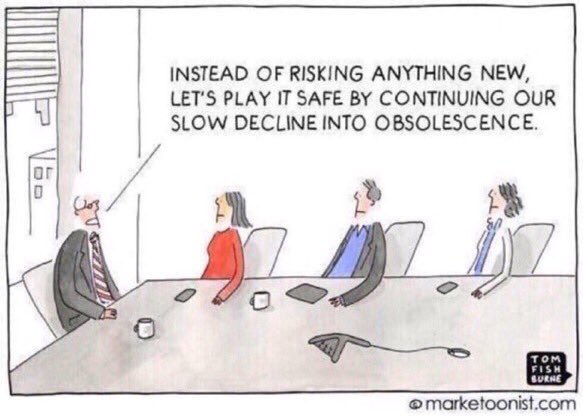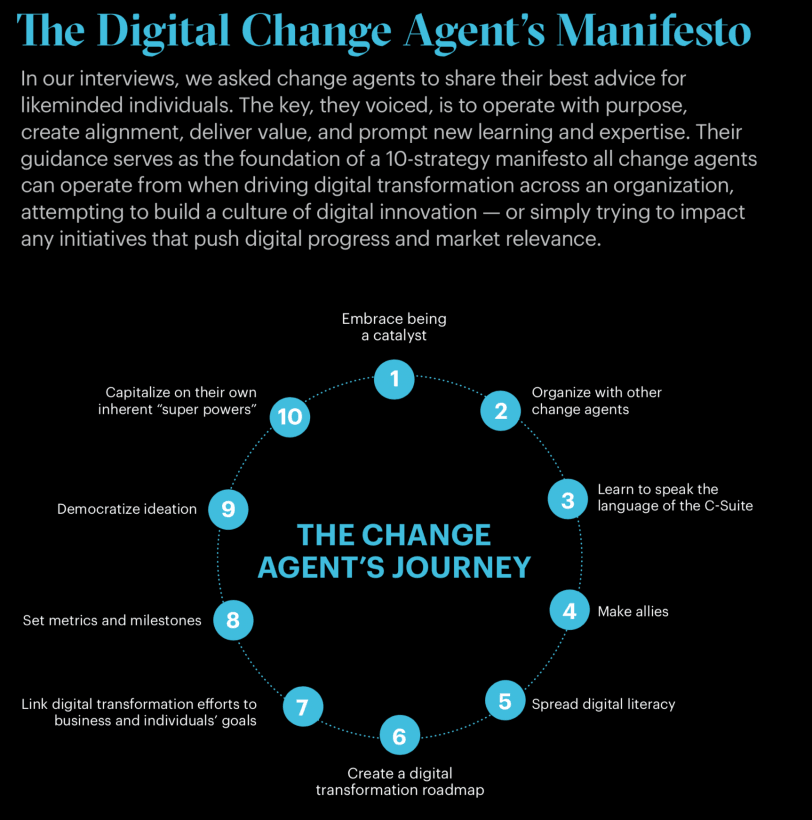
“It is not the strongest species that survive, nor the most intelligent, but the ones most responsive to change.” – Leon C. Megginson
We live in an era of digital Darwinism, where technology and society evolve faster than most businesses can adapt. Business as usual is no longer good enough. To survive, organizations must also evolve. While this sounds commonsensical, it’s easier said than done.
Challenging convention might be in the DNA of progressive companies such as Apple, Netflix, Starbucks and Tesla, but it’s not an inherent trait for more traditional organizations. And, while the “digital” in Digital Darwinism might imply that the answer to survival is the investment in disruptive technologies and digital expertise, that isn’t the entire answer. According to new research, the key to successful transformation is more human. Unfortunately, the human side of change and innovation is largely neglected in favor of investments in new tech and digital skills, a common, limiting mistake many companies make in competing for the future.
Right now, there are two major initiatives driving business modernization and advancement, digital transformation and corporate innovation respectively. At the same time, many executives cite that the number one limitation facing both efforts is “corporate culture.” In fact, culture turns out to be the biggest obstacle or the greatest catalyst facing change and growth. The other major obstruction is that digital transformation and innovation are viewed as cost centers and not investments.
The reality is that most operational cultures promote business as usual because it still works…at least in the short term. “We’re successful today! Why should we change?,” you’ll hear from plenty of executives. This perspective results promotes quarter-to-quarter performance and prioritizes the creation of shareholder and stakeholder value within fixed parameters. This creates focused drive and momentum, but also creates a false or overrated sense of security. It also breeds cultures and resulting behaviors that are risk averse, focuses efforts on short-term progress, i.e. incrementalism versus innovation, and limits perspective on future trends and shifts. Commonly referred to as short-termism, orthodox management approaches restrict the effectiveness and promise of digital transformation and innovation. At the same time, digital Darwinism doesn’t discriminate in its evolution. Companies either thrive, survive or erode.

The good news is that within almost every organization, digital changes agents are fighting to bring about meaningful change from within. The bad news is that, oftentimes, management and colleagues don’t see the need, appreciate or support the importance of their efforts.
After years of research and over 55 interviews, I learned that those behind notable examples of digital transformation and innovation were those to whom I referred to as “digital change agents.” These individuals are the unsung heroes of helping companies compete for the future. They share a deep expertise and passion for digital and they aim to help efforts in modernization and competitiveness. Digital change agents who endure many challenges to help spread digital literacy and new thinking across the enterprise and up to the C-Suite. However, expertise and passion only go so far. While experienced in new ways of working, communicating and thinking, many change agents aren’t necessarily seasoned or trained at navigating the cultural dynamics that drive change throughout an organization. Their work excels or is impeded by their ability to effectively combine digital transformation/innovation efforts with executive-supported change management initiatives.
As digital change agents quickly learn, most management constructs, even those that champion progress, are actually designed to scale business as usual while seeking out opportunities for incremental improvements, efficiencies and progress. And leadership is largely directed at delivering value by today’s standards to shareholders and stakeholders. Sure, these are broad strokes. But still, digital Darwinism advances. It presents a matter of perspective really. You either view it as a threat or an opportunity. Either way, to compete for the future starts with exploring the human side of business, seeking out and empowering your digital change agents, the innovation outliers and digital delinquents, who can help challenge the status quo.
The Digital Change Agent’s Journey
To help companies evolve, change agents must start by gaining support, building alliances and helping colleagues see opportunities rather threats and their role in leading change. According to my research, change agents should operate from a strategic manifesto to guide them in their digital transformation efforts, expedite change, and minimize complications and detractions.

Here are the 10 steps in the digital agent’s journey:
- Embrace being a catalyst
- Organize with other change agents
- Learn to speak the language of the C-Suite
- Make allies
- Spread digital literacy
- Create a digital transformation roadmap
- Link digital transformation efforts to business and individuals’ goals
- Set metrics and milestones
- Democratize ideation
- Capitalize on their own inherent “super powers”
Fear and doubt are the thieves of innovation. Digital change agents can become the next generation of leaders and help to be instrumental in having their companies more effectively compete in this digital economy. Executives that don’t recognize, empower and champion digital change agents risk losing their valuable expertise and drive to other companies that prioritize their value”
Get the TNW newsletter
Get the most important tech news in your inbox each week.




